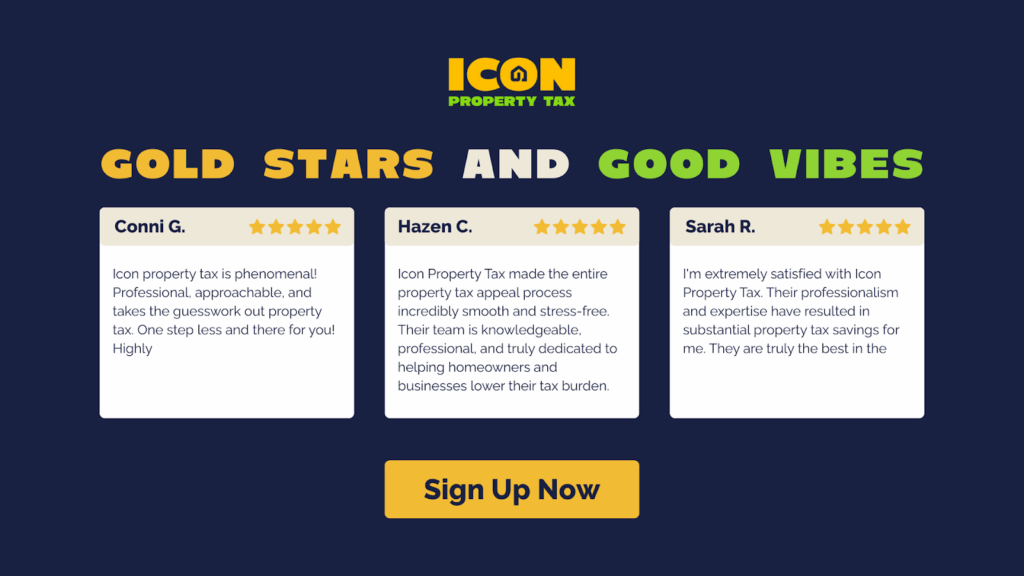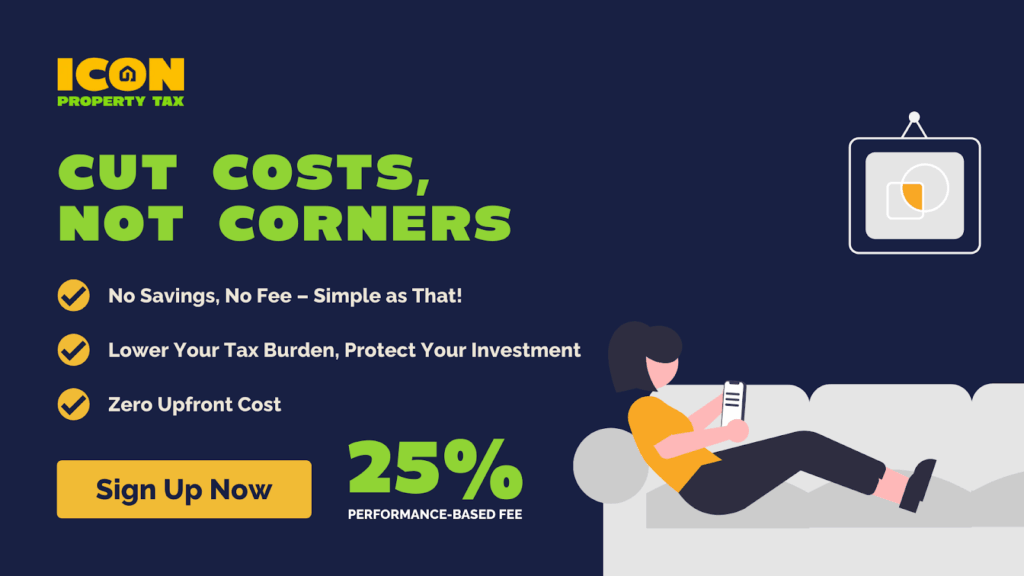Austin Housing Market Report: Prices, Buyer Demand, And Growth
August 20, 2025
Key Takeaways:
- Market Stability: The Austin housing market is stabilizing after years of rapid growth, with local conditions varying widely by neighborhood.
- Buyer Profile Shift: Demand is still active, led by relocators and long-term investors, while many first-time buyers hold off due to affordability.
- Tax Impact Awareness: Rising property tax assessments may not reflect true market value, homeowners should review and consider protesting them.
At Icon Property Tax, we’ve handled over 250,000 property tax protests and saved Texans millions of dollars in unfair assessments. We don’t rely on guesswork, gimmicks, or generic software. Our experience is rooted in real expertise, powered by local data, decades of property tax law knowledge, and a results-first approach that only charges you if we save you money. That’s not a slogan. It’s how we’ve built trust across Austin and beyond.
The Austin housing market has changed, but not in the ways most people expect. While headlines swing between “housing crash” and “price surge,” the reality is far more nuanced. We’re seeing micro-markets emerge across the metro, buyer trends shifting by demographic, and a mix of stability and uncertainty depending on the neighborhood. Add in new developments and record-breaking population growth, and you’ve got a market that requires more than a casual glance. Homeowners, investors, and even longtime Austinites are realizing how fast assessments can climb, often without their properties changing at all.
In this piece, we’ll break down the key factors shaping the Austin housing market in 2025, including price trends, buyer demand, growth patterns, and how to navigate rising property tax assessments.
Understanding The Current Austin Housing Market
The Austin housing market continues to shift, shaped by regional growth, migration patterns, and broader economic factors. As one of the fastest-growing metro areas in the country, Austin has seen its real estate landscape evolve quickly, but 2025 has brought a few changes worth paying attention to.
After several years of intense competition and price surges, the market is cooling slightly. Inventory is slowly increasing, giving buyers more options and softening the pace of price increases. At the same time, sellers are adjusting expectations, with many homes staying on the market longer than in previous years.
Still, Austin remains a high-demand city. A mix of strong job growth, major employers moving in, and a high quality of life continue to attract new residents, especially from out of state. That’s keeping the housing market active, even as interest rates and affordability challenges create some friction.
For homeowners, this period of adjustment presents both opportunity and risk. Property values remain elevated, but changes in assessed value can lead to higher property taxes. If your assessment has increased, consider protesting it with Icon, there’s no upfront cost, and you only pay if we save you money.

Home Prices: What’s Changing In Austin
Austin’s housing market is moving into a new phase. While prices remain high compared to pre-2020 levels, the breakneck growth has slowed. For both buyers and homeowners, understanding what’s driving this shift is key to making informed decisions, especially when it comes to property value and taxation.
A Cooling Market, But Not A Crash
Home prices in Austin have begun to stabilize after several years of rapid appreciation. The sharp spikes of 2020–2022 have given way to slower, more measured movement. While the market isn’t crashing, the intense bidding wars and double-digit year-over-year gains have faded.
Interest Rates And Affordability Pressure
Higher mortgage rates are one of the biggest forces behind this shift. Buyers are more cautious, budgets are tighter, and affordability has become a growing concern. This has led to reduced competition and more negotiating room, particularly in mid-range price points.
Neighborhood Trends: It’s Not One-Size-Fits-All
Not all areas of Austin are behaving the same. Price trends vary dramatically by neighborhood. Hot spots like East Austin, Zilker, and parts of Round Rock still see strong demand, while others have cooled more noticeably. If you own property, understanding these micro-trends can help you better interpret your tax assessment.
Why It Matters For Your Property Taxes
If the market has shifted but your assessed value hasn’t, you may be overpaying. Let Icon handle your property tax protest. You don’t pay unless we save you money, and our team has years of experience with local valuation shifts like these.
Buyer Demand In Austin: Who’s Still Purchasing?
Even with higher interest rates and affordability concerns, buyer activity in Austin remains surprisingly resilient. The overall pace has slowed compared to the frenzy of previous years, but serious buyers are still out there, especially those relocating for work or looking to invest long-term.
Texas continues to attract new residents, and Austin remains a top destination. Tech professionals, remote workers, and young families are driving much of the demand, especially in areas close to employment hubs and good schools. Investors are also re-entering the market, capitalizing on the softer pricing and long-term appreciation potential.
At the same time, many first-time buyers are on the sidelines, waiting for either rates to drop or prices to adjust further. This has shifted the dynamics, giving more room to those with flexible financing or cash offers.
If you’re a homeowner navigating these changes, keep in mind: a surge in buyer demand can affect how your home is assessed, even if you’re not selling. Protect your investment by keeping an eye on your property tax bill and knowing when it’s time to push back.
Growth Trends And New Developments Across the City
Austin’s growth hasn’t slowed, it’s just evolving. While central neighborhoods remain popular, much of the city’s expansion is now taking place in suburban and emerging areas. New developments, infrastructure projects, and mixed-use communities are transforming how and where people live across the metro.
North Austin and areas along the I-35 corridor are seeing substantial commercial and residential growth, driven by major employers and improved transit access. Southeast Austin, once overlooked, is now a hotspot for developers thanks to its proximity to the airport and more attainable price points. Even further out, places like Manor, Buda, and Leander are drawing interest from buyers priced out of central neighborhoods.
These shifts are reshaping property values, and not always in ways that are easy to predict. A new apartment complex or corporate office nearby can raise demand and assessments. For homeowners, that could mean higher taxes even if nothing about the home itself has changed.
Before your next property tax bill arrives, see if your assessment actually reflects your home’s real market position. Icon’s team understands Austin’s growth patterns, and how to challenge overinflated valuations.

What It Means For Homeowners And Investors
Navigating the Austin housing market in its current phase calls for a closer look at both short-term shifts and long-term potential. For homeowners, rising property values are a double-edged sword, they may boost equity, but they also bring the risk of higher property taxes. This is especially true if your assessed value jumps even while actual market demand is cooling.
Investors, on the other hand, are watching rental demand and neighborhood development closely. Areas with strong population growth and job access continue to perform well for buy-and-hold strategies. Still, margins are thinner, and understanding localized trends is essential for making the numbers work.
Whether you’re living in your home or holding onto it as an investment, it’s critical to keep an eye on your property tax liability. Icon can help you lower your tax burden and protect your investment, with no upfront costs and no risk if we don’t save you money.
How To Stay Ahead Of Rising Property Tax Assessments
In Austin, assessed property values don’t always align with real market behavior, and when they don’t, homeowners end up paying more than they should. As the market cools and shifts unevenly across neighborhoods, staying informed and prepared is more important than ever. Understanding how the process works, and when to act, can help you avoid unnecessary costs and protect your investment.
Why Assessments Are Rising Faster Than The Market
Even if home prices level out or dip in some areas, assessments may continue to rise. County appraisal districts rely on broad data models and limited neighborhood sampling, which can miss important details. This disconnect can lead to overstated property values, and bigger tax bills.
What To Do When You Receive Your Notice
As soon as you get your annual appraisal notice, don’t ignore it. Compare the assessed value to recent comparable sales in your area, and take note of any inconsistencies. If your home’s valuation seems high relative to the market, it’s worth challenging.
Partnering With The Right Team To Protest
You don’t have to go through the protest process alone, and you shouldn’t have to risk anything financially to get help. Icon can take the lead on your property tax protest, and if we don’t save you money, you owe us nothing. That’s our no-savings, no-fee pledge, simple, effective, and designed to keep your costs low.

Final Thoughts
The Austin housing market is adjusting, not declining. Prices are stabilizing, demand is evolving, and growth continues to shape the region in new ways. For homeowners and investors, these shifts bring both opportunity and responsibility.
Staying informed about your home’s value and your tax assessment is no longer optional, it’s part of protecting your investment. At Icon, we help you do exactly that. If your assessed value doesn’t reflect reality, we’re here to challenge it on your behalf, and you only pay if we’re successful.
Read Also:
- Austin Property Tax Appeal
- The Hidden Costs Of Homeownership: It’s More Than Just A Mortgage Payment
- Essential Texas Home Buying Guide: Taxes, Costs & Legal Insights
Frequently Asked Questions About The Austin Housing Market
What is driving people to move to Austin right now?
Austin continues to attract new residents due to a strong job market, particularly in the tech, biotech, and education sectors. The city also offers a vibrant cultural scene, an active lifestyle, and no state income tax, making it especially appealing to remote workers and families relocating from more expensive states.
How are property tax rates calculated in Austin?
Property tax rates are based on the appraised value of your property and the combined tax rates from local entities like the city, county, and school district. Even if the tax rate stays the same, your bill can increase significantly if your appraised value goes up.
Is it a good time to buy a home in Austin?
Buyers who are financially prepared may find this a strategic time to enter the market, as prices have stabilized and bidding wars have cooled. However, mortgage rates remain relatively high, so it’s important to evaluate the long-term value of any purchase.
Are short-term rentals still profitable in Austin?
Short-term rentals can still generate income, particularly in tourist-heavy neighborhoods and near downtown. That said, recent city regulations and rising operational costs have made it more challenging to sustain high profits without a well-located and well-managed property.
Which Austin suburbs are seeing the most rapid growth?
Suburbs like Leander, Buda, Manor, and Pflugerville are experiencing rapid residential and commercial development. These areas are benefiting from lower home prices, infrastructure upgrades, and increasing interest from developers and families alike.
How often do property assessments change in Travis County?
Property assessments are reviewed annually by the Travis Central Appraisal District, but changes depend on market trends and local sales data. Even if your home hasn’t been updated or sold, your assessed value can still increase based on neighborhood comparables.
How does new development impact existing homeowners’ property taxes?
When a new development brings in amenities, retail, or higher-end housing, nearby property values may rise as a result. This can lead to higher assessments and larger tax bills, even if your home hasn’t changed physically.
Can commercial property owners protest assessments like homeowners?
Yes, commercial property owners have the same right to protest tax assessments in Texas. The process is often more complex due to income-based valuation methods, but it can result in substantial savings when handled correctly.
What is the difference between appraised value and market value in Texas?
The appraised value is what the county uses to calculate property taxes, and it may not always match current market conditions. Market value, on the other hand, reflects what a buyer would actually pay in an open transaction, which can fluctuate more rapidly.
How long does the property tax protest process usually take in Austin?
The protest process typically takes anywhere from a few weeks to a few months, depending on whether it’s resolved early or escalated to a formal hearing. Filing early and working with a knowledgeable team can help speed up the process and increase your chances of success.

